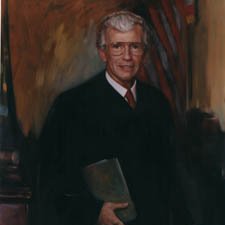And we’ll show you two ways to help. Together, we can be a voice for change and protect Michigan’s land, air, water, public health, and democracy.
This opinion sought to take the Michigan Supreme Court “out of the zoning business.” It overturned a case which allowed courts to refashion zoning rules after finding them unconstitutional, and recognized it as a local legislative policy function best carried out by local municipalities. It revised the procedures for how Michigan courts deal with zoning ordinances once they are determined to be a “taking” of the owner’s property use by sending them back to to the zoning board for revising but allowing the owner to prove that the proposed conflicting land use is reasonable.
Joseph Schwartz wanted to build multiple-family homes and townhomes on twenty-eight acres of undeveloped land in Flint, including land within the 100-year flood plain of Thread Lake and Thread Creek. He challenged the constitutionality of the zoning classification restricting the property to single-family homes on large lots. After the courts found the zoning classification to be unconstitutional, the circuit court rezoned the land, following a procedure outlined in a prior Michigan Supreme Court case. When the rezoning order was challenged, the Michigan Supreme Court invalidated the procedures allowing courts to rezone properties after a zoning classification is deemed unconstitutional. A court can determine that a zoning classification violates a person’s right to use his or her land, but the local zoning authorities must rezone. However, if property owners can show, by a preponderance of the evidence, that their proposed use of the land is “reasonable,” the land must be rezoned to allow for this reasonable use. The Supreme Court sent the case back to the circuit court to determine whether Mr. Schwartz’s proposed use of the land was “reasonable.”
In 1967, Joseph Schwartz owned twenty-eight acres of undeveloped land, including land in the 100-year floodplain of Thread Lake and Thread Creek. At the time, Mr. Schwartz’s land was zoned as A-2, meaning he could only build single-family homes with minimum lot sizes of 5,000 square feet. Schwartz asked the City of Flint to rezone his property from A-2 to C-1, which would allow him to build multiple-family garden apartments and townhomes. The City of Flint denied Schwartz’s request for re-zoning, prompting him to bring suit. Schwartz argued that the City’s zoning classification was unconstitutional because it was an undue invasion in the private use of his property without any public welfare justification. After several back and forths, including a rezoning by the City to make the zoning classification even more stringent, the Court of Appeals held that the zoning classification was unconstitutional as applied to the Schwartz land. Following procedures outlined in the Michigan Supreme Court case Ed Zaagman, Inc. v. City of Kenwood, the circuit court judge received proposals from Schwartz and Flint, and held an evidentiary hearing to determine “the most equitable or ‘midsatisfactory use’ to be made” of the Schwartz parcel. The judge ordered that the land be divided into “tiers” with varying zoning restrictions. The Court of Appeals essentially affirmed the zoning order.
Did the circuit court have the power to rezone the Schwartz property after determining that the City of Flint’s zoning classification was unconstitutional?
The Court (Justice Brickley joined by Justices Boyle, Riley, and Cavanagh) held that the circuit court could not rezone the property by order after declaring a zoning classification to be unconstitutional, overruling Zaagman. Zoning is a legislative function and allowing the courts to rezone violates the separation of powers provision of the Michigan Constitution. If a zoning classification is found unconstitutional, the local zoning authority, not the courts, must rezone. The Court, however, argued that property owners like Schwartz should be given some remedy in the courts if a zoning classification is struck down. If the property owner can show, by a preponderance of the evidence, that his or her proposed use of the land is “reasonable,” the reviewing court can order that the land be rezoned to allow for this use.
The Court sent the case back to the circuit court to determine if Mr. Schwartz’s plan to build multiple-family garden apartments and townhomes would be a reasonable use of the land, and therefore whether the City of Flint would have to allow for this use when it rezones the land.
Justice Levin (joined by Justice Williams) agreed with the result, but would retain some aspects of the Zaagman procedure, such as allowing a judge to review a rezoning proposal submitted by the local zoning authorities after a zoning classification is struck down.




